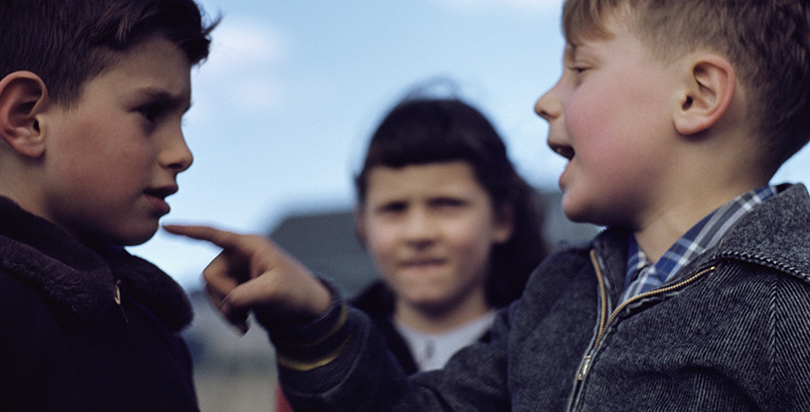So I was told once by a 12-year-old girl, by way of explaining why no one in her class notified a teacher that boys were whipping glue sticks out a fourth-floor school window.
The idea of a “secret pact” separating students from adults came to mind during the outburst of bullying that followed Donald Trump’s election.
The 74 compiled more than 500 incidents reported on social media, but research on school culture suggests we’ll never know about most of it. A report surveying 80,000 children suggests school today resembles Lord of the Flies with chaperones.
“They say they have a zero tolerance for bullying, which is a complete lie,” one student said. “People are bullied, they try to get help, and then they get no help and continue to get bullied.”
Another said: “Everyone here is either bullying someone or being bullied. The teachers say if you have a problem, go see them — but they do nothing about it.”
And a new report in The New York Times describes how minimal oversight on school buses has led to frightening instances of abuse.
What Kate Stringer identifies as the “tremendous disconnect” between adult and student perceptions of what’s happening in school indicates that it is worth reviewing the basic facts as we start 2017:
What is bullying? Sociologists point to three qualities: there is an intention to hurt, the aggressor has more power (physically, socially or intellectually), and it recurs over time. Playful teasing and conflict between equals is not bullying.
How prevalent is it? Depends on how you count. A 2009 National Institutes of Health study reported that more than 50 percent of students in grades six through 10 were verbally or socially harassed within the past two months. The Department of Education figures track over time; it reported that in 2013, the most recent year for which there are data, 22 percent of students between the ages of 12 and 18, or nearly 5.4 million students, said they were victims of bullying. The rate has declined since the ramp-up of anti-bullying measures began in the 1990s, including a 10-point drop since 2007. (We don’t yet know whether this year’s post-election bigotry reflects an increase or just more scrutiny.)
Bullying is most common in middle school, the DOE reports, with 37 percent of sixth-graders but only 22 percent of high school seniors reporting incidents.
Among those targeted, 6 percent said it happened daily. About 40 percent of bullied kids said they told an adult at the school.
Part of the difficulty in measuring and managing bullying is that children have different thresholds. Asian students, for instance, are substantially less likely to say they’re bullied — only 12 percent say so, compared to 25 percent of white students.
Who gets bullied? In 2013, about 24 percent of girls and 20 percent of boys.
Apart from Asian students, there weren’t large differences in the race or ethnicity of those who reported bullying. In the new YouthTruth survey, nearly half of bullied kids (44 percent) said they were targeted because of their appearance. The next largest reason was race or skin color (16 percent), while 14 percent said bullies thought they were gay.
How are students bullied? Physically, which is the least common and mostly happens among boys (hitting, slapping, pushing); verbally, the most common (insults, name-calling, taunting); and socially (spreading rumors, ostracizing, breaking confidences).
As anyone who hung around a middle school locker might guess, the most frequent act of bullying in America is spreading rumors about girls: 17 percent of girls said it happened to them in 2013.
What about cyber-bullying? Cyber-bullying is difficult to quantify. The DOE reports 7 percent of students saying they were victimized — most frequently through unwanted texting — while the Centers for Disease Control said more recently that 16 percent were targeted. Because students report cyber-bullying far less often than in-person harassment, the prevalence may be much higher.
While cyber-bullying appears to be rising, especially among girls, many more students are bullied at school than online; online targets tend to be bullied in real life, too, just as online bullies tend to be brick-and-mortar bullies.
What are the effects of bullying? Being bullied is associated with reduced school achievement; long-term depression; poor health, wealth and social-relationship outcomes; substance use, violent behavior, unsafe sexual behavior and suicidal behavior.
The good news is that bullying is changeable. YouthTruth found huge variations between schools. Anti-bullying programs can reduce prevalence by more than 20 percent. Then there’s talking to our children, a lot. Providing social strategies and modeling ethical behavior. It works.
That “secret pact” among kids? They don’t agree to it; it just happens. Sometimes they need to be reminded they’re not as stuck as they think they are.
Get stories like these delivered straight to your inbox. Sign up for The 74 Newsletter


;)
